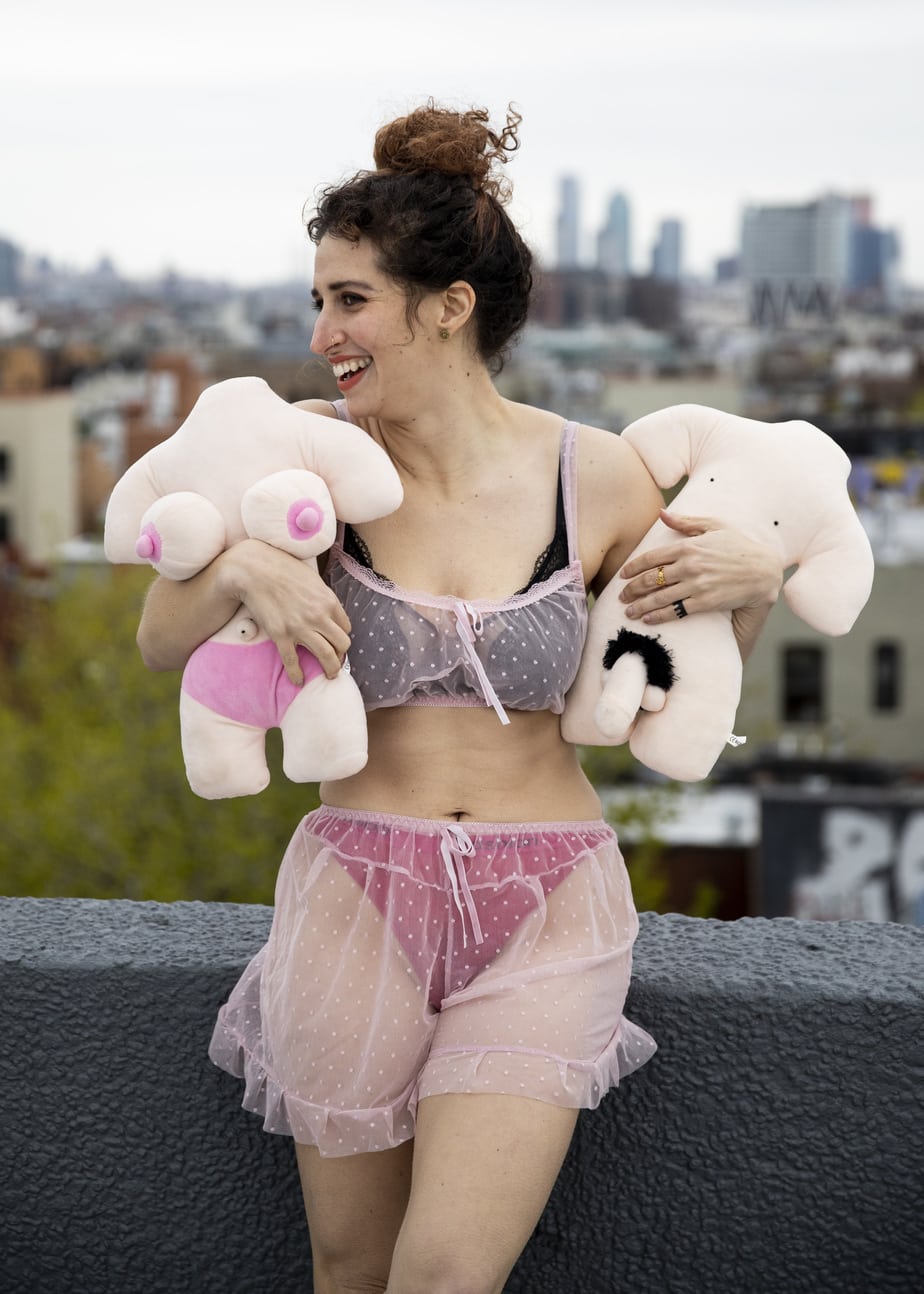What’s the difference between a kink and a fetish?
Kink is subjective. You may see varying explanations of kinks or fetishes based on what they mean to the particular person giving the definition. The most obvious manifestation of this is how sex can be woven into the narrative. Kink or fetish do not have to be inherently sexual or involving the genitals at all. Sometimes just the act of engaging with an item, activity, or idea is what brings on the feeling of ultimate release, achieving a sublime state that many would often associate with orgasm.
Kink: an item, activity, or idea of interest where one derives pleasure. This may be sexual or not. Any kink can be a fetish given the context of the kinks’ importance in a person’s life or the nature of that kink.
Fetish can be defined in a few different ways
- An item, activity, or idea that wouldn’t otherwise be sexual but that we give it sexualised properties e.g. stockings, moustaches, latex
- Intense fixation on a particular item, activity, or idea.
- An item, activity, or idea required for an individual to reach ultimate satisfaction. That satisfaction may or may not include orgasm or be sexual in and of itself.
When discovering your kinky profile, it’s best to identify feelings that can influence an activity, rather than the other way around. When we lead with feelings, these can not only determine what activities we might enjoy, they can also instruct how to engage within the activity. After all, you can spank someone five different ways to Sunday, each resulting in a totally different experience.
Does having a kink make me weird? Help!
In short, no. Firstly, weird is subjective. When we say something is weird or abnormal that implies that there is a norm or standard dictated by society. The entire point of kink is subverting societal standards and creating your own rules under the guise of RACK (Risk Aware Consensual Kink) and PRICK (Personal Responsibility, Informed, Consensual Kink).
Though it takes practice to remove shame, to practice kink is to reject what is perceived as normal.
Is all kink Dom/sub play?
You don’t need to involve a power dynamic to engage in kink—this is the difference between a bottom and a sub or a dom and a top. You can have things done to you without having an agreed-upon power imbalance.
Lady Euphoria, a NYC based power dynamics expert, clarifies our potential roles in power play. “In power play, there’s an intentional exchange of power and implementation. Tops and bottoms may engage in both, however, the assumed exchange of power is limited and contained to implementation. Top is an implementer, bottom is an implementee”.
So how does this differ from Dom and sub? Euphoria believes that the commitment level and dynamic orientation is the differentiator. “Doms and subs are further driven by the chosen roles and power exchange. A Dom is not only the implementer but the chosen lead, and the bottom is the implementee as well as being the willing follower”.
Are you validating or invalidating?
Generally speaking, I like to think of our main draws to kink as something that either validates or invalidates our insecurities. The act of closing that loop is what makes it satisfying, perhaps putting us in a space where we can be aroused. It is not necessarily a 1:1 correlation between kink and arousal, but rather the kink that leads to a space where arousal is more possible.
Kink One: Service
This kink’s foundation is centred around the pleasure of satisfying another’s needs no matter how large, small, sexual, or not they may be. Service is a common kink and often a foundational one at that. Those who find peace in knowing what is expected of them at all times or those who thrive off validation tend to be drawn to this kink.
Taking a page from Love Languages, those who identify acts of service as their main source of love could find solace in service-based kink. This can manifest as simply as body worship, completing tasks, following rules, and anything else the other partner(s) may deem as useful. As this tends to be one of the more regimented kinks, it requires both sides to be observant, paying attention to detail. Rituals can also be involved in this kink, with activities as diverse as bathing, collaring, and spanking lending themselves well to this group. This kink is all about shying away from chaos in favour of structure.
See more: Domestic servitude, personal care, massage
Kink Two: Image Validation
The role of visual media in today’s society has placed huge importance and value on the image. Correspondingly, for some people, this is where many of our insecurities lie. It is for this reason that image validation (or invalidation, in some cases) can help shut our brain up by closing that loop so we can enjoy ourselves. Unlike the validation provided in service, this kink is less focused on pleasing the other person and more about one’s self.
In its most basic forms, image validation can be divided into categories of body worship and objectification. How does the idea of someone taking slow, careful time to worship your body make you feel? This could be focused on your most naughty bits or on nonsexual parts of your body—from your knees to your elbows to your chest. The validation could be of a part you are insecure about or an area you feel goes undervalued or unnoticed, rewriting the narrative around those parts of your body as beautiful, desirable and loved. The difference between worship and general sexualized play is the attentiveness and non-sexual attention provided, which may or may not be in addition to sexual attention.
Objectification, on the other hand, is pure sexualisation. A common example of this is in cis-men who are overwhelmingly minority recipients of cat-calling and unwelcome “compliments”. Many cis-men can feel a lack of sexualisation in hyper-patriarchal cultures, where sexual attention is more often directed towards women and femmes. Objectification can therefore give them the sexualisation they may not often experience. This can take the form of demoralizing (in a hot way) – where one party is a sex object for the other, to be sexy at all times and only existing to please their partner. Objectification can also take the more extreme approach of bimbofication, exaggerating the most feminine or masculine characteristics one embodies.
Ultimately, whatever form of image validation you may take, it should feel good to the receiver.
See more: Objectification, bimbofication, worship
Kink Three: Power Play
While power dynamics can exist in many aspects of kink it is sometimes the power-play itself that can be the main draw for many people. This may look like replicating classic exchanges: teacher/student, guard/prisoner, naked/clothed. This kink can take the form of replicating these power dynamics as they appear in society or subverting that power and flipping those dynamics on their head.
While this kink focuses on the exchange of power, it is not set in stone. Power can be continuously exchanged back and forth as is the case with brats or “fighting for top”. Many identify with the love of the struggle in this particular kink. Because of this, multiple safe words or gestures are useful as saying or embodying “no” may be integral to the play.
See more: Roleplay, brats, predicament bondage
Kink Four: Shame
Many are naturally drawn to the forbidden, the dangerous, the naughty. If your main draw to an activity is because it’s so dirty/wrong/slutty etc… you may be a prime candidate for shame-related kinks. This doesn’t mean that you embody the shame outside of your kink—though, if you do, it might be something worth working through outside of practising kink, with a therapist and/or through journaling, for example.
Ultimately this can be an extremely liberating and empowering kink. Eroticising shame may be the very way we move through it, giving a giant middle finger to all the would-be shamers, including our past selves.
See more: Society- or gender-based shame (i.e. sissification or pain play), sexual-based shame, upbringing-based shame
Kink Five: Novelty
Perhaps you engage in one of the aforementioned kinks above and have a grand old time. But then you try it again and it starts to lose its lustre, and the next time you try it…you like it even less. This may be due to your having a novelty kink, revelling in the excitement that newness can bring.
Novelty can come by way of activity, location, or person. It’s important to keep novelty in mind when you’re working out what it is that you like – we can sometimes confuse our draw to novelty with our draw to the kink, deciding that we’re really into pain play, for example, when what has actually piqued our interest is the newness of the activity.
If novelty is a specific factor in the activities you enjoy there are plenty of ways to incorporate this into your sex life without getting a new hotel room every week. Engaging in novelty means you’ll need to get creative—what fun! This could mean changing the stipulations and backstory of the same situation. Forming a new narrative behind the same activity can change the build-up and excitement, giving you something new to buy into mentally even if the physical or visual is the same. Even the smallest additions like a blindfold, a new toy, or a new outfit can be enough to satiate our drive for newness.
See more: Exhibitionism, sex/kink parties, roleplay
I’m not into any of those…does that make me boring?
As kink is subjective and entirely customizable to each person it’s more about the approach you take rather than the activity you engage in. A stroll to the shops could become a kinky experience depending on context. Doing your grocery shopping whilst listening (with headphones) to erotica, for example, or not wearing any underwear, suddenly makes the supermarket super-hot. You don’t even need another person to engage in kink! Euphoria launched her Self-Domination course during the pandemic and has guided many individuals in practising kink with themselves first and foremost.
Even so, kink just might not be your thing, and that is totally okay. You are not any less sexual, explorative, or desirable if kink is not for you. You deserve to find something that makes you feel alive, validated, and your absolute best, and if kink isn’t doing that for you, it’s up to you how long you want to explore it before you try another route.
When it comes to kink, and especially fetish, it can take time to find your footing. There’s no norm, no one-size-fits-all. It’s just you, your curiosity and your desires. And that’s the real joy of kink.

Lola Jean is a Sex Educator, Mental Health Professional, Wrestler, Pro Domme and World Record Holder for Volume Squirting (solo.) providing the No Frills Sex Education we both need and deserve. Lola brings a refreshing understanding to sex, sexuality and kink to push individuals past what they think they are capable of. There is so much we are not exploring due to fear. Fear of how society will view us. How our partners will view us. How our peers will view us. Lola helps individuals stop making excuses and unlock who they are and what they deserve.

